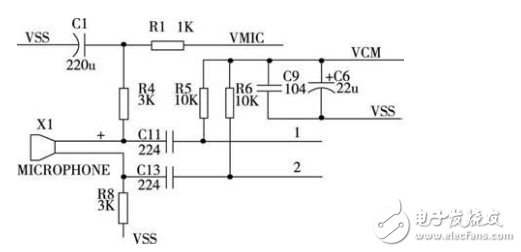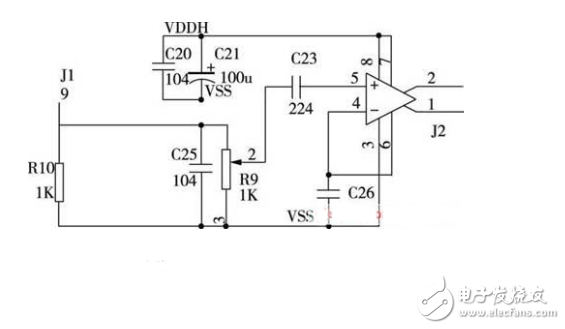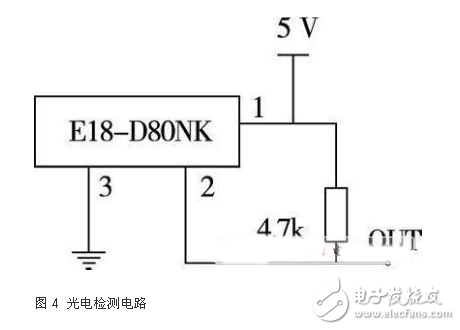Overall circuit design of smart car robot
The smart car's core controller SPCE061A is a 16-bit unique speech controller with on-chip nSPTM core processor for high processing speed, 16-bit arithmetic logic operation, 16 &TImes; 16-bit hardware Multiplication operation and DSP inner product filtering operation can quickly process complex digital signals, and can realize speech encoding and decoding without additional dedicated voice control chip, which not only saves design cost but also meets certain control requirements. Controller with modular architecture, integrated ICE (in-circuit emulation), phase-locked loop oscillator, time base controller, 7-channel 10-bit AD converter, single-channel AD+ AGC (automatic gain) converter, dual 10-bit DA Converter, universal asynchronous communication interface, serial input and output interface, voltage monitoring and other modules. There are many technologies for realizing automobile intelligence. This paper uses the current popular technical voice control technology to realize automatic forward, backward, left turn, and right turn of the car. Of course, the designed car is only the micro model of the smart car, and it is still in the simulation. At the stage, there is still a long way to go to truly realize the smart car service.
The smart car is mainly composed of voice input circuit, voice output circuit, SPCE061A controller and drive circuit. The SPCE061 controller of the car realizes voice control through the A/D channel and D/A channel of the built-in microphone amplifier and automatic gain function, and the voice triggers the movement of the car. After the car moves, the movement state of the car can be changed at any time by voice command, if the process of travel There are obstacles in front of the car, and the car will automatically stop.
Voice input circuit design
The voice input circuit of the car is shown in the figure. Among them, VM IC provides the power of the microphone, VSS is the analog ground of the system, VCM is the reference voltage, and pins 1 and 2 are the input pins of the positive and negative poles of the microphone X1. When speaking to the microphone, pins 1 and 2 will change waveforms with the sound input from the microphone, and two inverted waveforms will be formed at the two ports of SPCE061A and sent to the operational amplifier inside the SPCE061A controller. The audio is amplified, and the amplified audio signal is converted into a digital quantity by an ADC converter, stored in a corresponding register, and then subjected to compression, identification, playback, and the like.

Voice output circuit design
The voice input circuit of the car is shown in the figure. Where VDDH is the reference voltage and VSS is the analog ground of the system. The audio signal is sent to the 9th end of the circuit by the DAC pin output of SPCE061A, and sent to the integrated audio power amplifier SPY0030 through the adjustment terminal of the volume potentiometer R9. After audio amplification, the audio signal is output from the SPY0030 through the J2 port external speaker to play the sound.

Photoelectric detection circuit design
The photoelectric detection circuit of the car adopts the photoelectric sensor of E18-D80NK model, which integrates emission and acceptance. The infrared emission tube emits infrared rays in a certain direction. After encountering obstacles, the infrared rays are reflected and accepted by the receiving tube, thereby judging the car. Whether there is an obstacle in front, the sensing distance to the obstacle can be adjusted by the fine adjustment knob on the sensor as required. A lens is added to the front end of the sensor to detect objects from a distance by focusing. The sensor integrates the amplification, comparison and modulation circuits to make the sensor less affected by visible light. The connection diagram of the photoelectric detection circuit is shown in Figure 4.

N-BK7 Precision Windows are ideally suited for industrial and low power laser applications. The high tolerance design yields minimal beam distortion and scatter. Broadband coating options extend the range of these precision windows through the visible and near-infrared spectra.
Our plane plates are also available with the following coatings:
VIS range (ARB2: R < 0.5 % per surface, AOI = 0°, λ = 450 - 700 nm).
NIR range (ARB2: R < 0.5 % per surface, AOI = 0°, λ = 725 - 1050 nm).
Nd:YAG fundamental (ARHS: R < 0.2 % per surface, AOI = 0°, center wavelength 1064 nm)
Reflective aluminum coating (RAL: for λ = 400 nm - 12 μm, damage threshold > 200 mJ / cm2)
Front surface mirror silver coating (RAGV: for λ = 500 nm - 12 μm, damage threshold > 200 mJ / cm2)
For customized optics please contact our sales team for your individual quotation.
Bk7 Wafers,K9 Wafers,Thin Transparent Glass,4 Inch Bk7 Wafers
Zoolied Inc. , https://www.zoolied.com